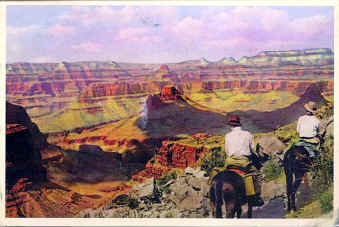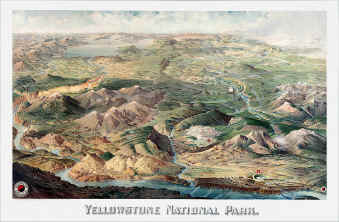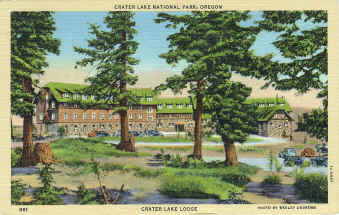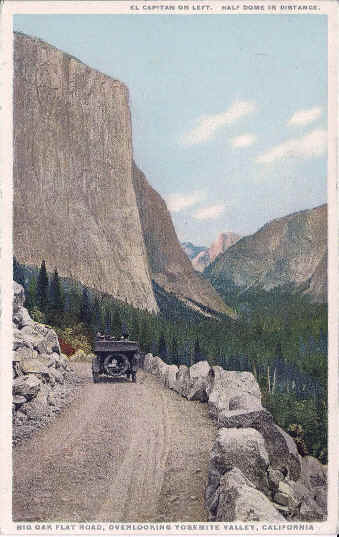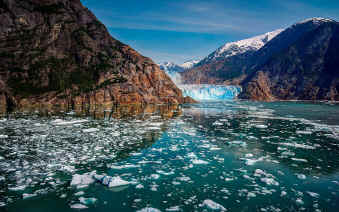|
Wish You Were Here by Bob Brooke
The Origin of the Postcard
Léon Besnardeau created the first picture postcard at Camp Conlie, a training camp for soldiers of the Franco-Prussian War, in France that same year. The cards had a lithographed design printed on them containing emblematic images of piles of armaments on either side of a scroll topped by the arms of the Duchy of Brittany and the inscription "War of 1870. Camp Conlie. Souvenir of the National Defence. Army of Brittany." That same year, postcards came to Germany, Luxembourg, and Switzerland.
postcards were available in most of the rest of the world. Cards showing the Eiffel Tower in 1889 and 1890 launched a postcard craze a decade later. But it wasn’t until the Columbian Exposition in Chicago in 1893 that the first American souvenir postcard, developed in 1873 by the Morgan Envelope Factory of Springfield, Massachusetts, appeared. Colored artwork associated with the fair appeared on the backs, then the non-address side, of government-printed cards. These postcards, commonly known as "souvenir" cards, became immensely popular. People who attended the fair sent thousands of souvenir cards to friends back home. But when the Columbian Exposition closed, the U.S. Government stopped issuing illustrated postcards. Private publishers continued printing scenic views of tourist locations, so these cards became known as "view" cards.
Early Postcards The establishment of Rural Free Delivery, or RFD, in the U.S. in 1896, made it possible to send mail to almost anyone throughout the world. Next, Congress approved a one-cent mailing rate for Private Mailing Cards, PMCs, on March 1, 1898, effective July 1, 1898. The Federal Government reduced the postal rates for PMCs as an experiment to increase revenue, and it was successful beyond all expectations. Previous to this time privately printed cards, also known as postals, required two-cents postage rather than the one-cent postage on government issued cards. There was little incentive to produce or use privately printed postals before July 1, 1898 because of the higher cost and the limited space for the message. Since most Government-issued cards were monochromatic, they didn’t appeal to collectors at the time.
The beginning of the end of the Golden Age of Postcards came with the passage of the Payne-Aldrich Tariff in 1909. Germany was the most prolific printer of postcards in the world. This tariff increased the price of imported paper, including postcards, and dramatically affected the export trade of European, and German, printing companies. The second, and more serious, event to adversely affect postcard production was World War I. European printing companies suffered serious setbacks from damage to their factories during the war. The White Border Era
Postcard collecting had fallen out of favor by this time, and postcards were no longer the most important form of communication. This resulted in lower quality American postcards that weren’t as colorful or detailed as the German chromos. U.S. postcard publishers produced most of the postcards for the American market. After the War, the Germans replaced labor intensive and expensive chromolithographic printing with less expensive four-color offset printing. These cards had low contrast and pale colors since makers printed them on coated stock with a flat non-glossy surface. The Linen Era
The Curt Teich Company produced a style of linen card known as large letter, featuring Art Deco-style designs consisting of large letters with images inside them. Curt Teich published large letter postcards of several of America’s national parks, including a number of parks established in the 1930s. During the Great Depression, a source of views for postcards of the national parks came from the WPA—the Works Project Administration, which through its Federal Art Project, enabled artists to create posters from which some of the postcards images came from 1935 to 1938. The Photochrome Era
Some of the most common scenes depicted in postcards
of the national parks featured popular scenic views and tourist
activities. The scenes shown on postcards of the national parks changed Postcard collecting is once again a popular pastime, mostly because they’re relatively inexpensive and take up little space, compared to other collectibles. Postcard collectors look for many features in national parks postcards, including design, graphics, picture, postal markings, artistic merit, materials used, production details, date of publication and publisher, and, of course, condition.
PHOTO CAPTIONS: Top to bottom This linen postcard shows a nostalgic view from the back of a mule as the mule tour descends into the Grand Canyon. This postcard from 1904 is a painting of a low aerial view of Yellowstone National Park. A view of Crater Lake Lodge in 1901 by the Detroit Publishing Company. This White Border postcard shows a car traversing a road in Yosemite National Park in the early 1920s. Many early black and white photographic postcards, such as this one of the Petrified Forest National Park, were hand tinted. A fantastic color chrome photograph of Glacier Bay National Park shows it in all its frozen glory. The WPA enabled artists to paint posters of the national parks like this one for Everglades National Park, many of which were made into postcards. A bright large letter postcard of Yellowstone Park by Curt Tech & Co. An early photographic postcard showing the Tumacacori Mission in southern Arizona in 1916. As an avid collector of a variety of antiques and collectibles for the last 20 years, Bob Brooke knows what he’s writing about. Besides writing about antiques, Brooke has also sold at flea markets and worked in an antique shop, so he knows the business side too. His articles have appeared in many antiques and consumer publications, including British Heritage, Antique Week, Southeastern Antiquing and Collecting Magazine, OldandSold.com, and many others. To read more of his work, visit his main website at www.bobbrooke.com or his specialty antiques site at www.theantiquesalmanac.com |
